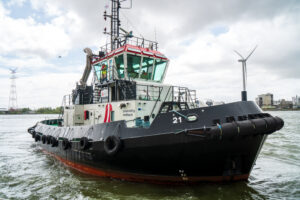A safe route home: Planning for post-pandemic cycling in British cities
With more and more demand for active travel infrastructure across the UK, local authorities have a responsibility to keep users safe. Martin Guttridge-Hewitt considers the risks to the UK’s pedal-powered commuters from other road users, and their emissions.
In 1984 UK attitudes towards active travel looked very different from today. Back then, British cycling successes at major events like the Commonwealth and Olympic Games had yet to inspired the public to ride more, and the Covid-19 pandemic was almost four decades away. As was the ‘bike boom’ it triggered over concerns about crowded public transport and the struggle to stay fit while stuck inside for months on end with sports facilities closed.
Nevertheless, the roots of the National Cycle Network were planted in 1984, with the 14-mile Bristol and Bath Railway Path opening. 11 years on, the network officially launched under the stewardship of the charity Sustrans, with £42.5m of National Lottery money and 500miles of routes. Today, that has grown to 12,739miles from southern England to the Scottish islands, passing within one mile of half the UK population along the way. Pre-pandemic, 765m annual trips were made on the system, boosting the national economy in 2019 by £2.1bn through tourism and leisure alone.
The NCN shows people embrace alternatives to motorised transport when convenient provision exists, and local businesses benefit. Not to mention the environment. A 2021 Imperial College London study of 2,000 people in seven European cities concluded that ditching car for bike just once a week reduced our personal carbon footprint by around 0.5 tonnes annually. But while advantages of more people cycling are clear, safety issues have long been a concern.

When six cyclists died on London roads in just two-weeks during November 2013 widespread demands for infrastructure improvements and redesigns soon followed, and steps were taken in subsequent years. Much more recently, the Department for Transport introduced LTN1/20, standardising blueprints for safer cycle lanes, including the amount of space and types of junction crossings required. The impact of this is significant.
‘There’s lots in there that seriously improves on the thinking of previous decades. [It] shows just how far cycling infrastructure has come since the days of a painted line on the road,’ says Ed Plowden, Paths for Everyone Programme Director at Sustrans. ‘The recent formation of Active Travel England is also important, because [the organisation upholds guidance by] only funding infrastructure plans from local authorities that are LTN1/20 compliant. And it will be assessing the general performance of highways authorities in providing for active travel.
‘Guidance has clearly been produced by people with a great deal of knowledge of what works and personal experience of cycling, and it emphasises the need for designers to have personal experience of cycling,’ he continues of how new regulations have been developed, and who by. ‘Some local authorities now include cycle lane users and user groups within the design consultation process, sometimes referred to as co-production. Their greater involvement over time is perhaps evidenced by a greater focus from local and regional authorities on infrastructure and initiatives to support cycling and active travel. We’ve seen measures like Low Traffic Neighbourhoods work best when people are involved in conversations about understanding the benefits as well as designs.’
Plowden also points to a number of areas that have appointed commissioners for cycling and other forms of active travel, citing the West Midlands, Sheffield, Greater Manchester and London as key examples. Like Active Travel England, this is about developing organisations focused entirely on these modes of transport, which staff and leadership actually use, rather than leaving such infrastructure to be managed by the same bodies tasked with routes prioritising cars and other motor vehicles. As a result, active travel networks are becoming more comprehensive, efficient and safer, although protecting cyclists from drivers is only one part of the story.
In the UK air pollution is a major public health concern. 97% of homes in the country are exposed to an atmosphere in breach of at least one World Health Organisation air quality guideline, and, according to 2017 numbers from the Office for National Statistics, 21% of all greenhouse gas emissions in the country are traceable to road traffic. So how worried should councils and the public be about exhaust fumes when cycling on-road routes through cities and other high pollution areas?
‘One privilege of working at a university is you’ve got all these bright young things you should be teaching and inspiring, but you can also set them interesting research projects. So, we’ve done a number of exposure studies [to determine the dangers of emissions for cyclists],’ says James Tate, Associate Professor at the University of Leeds’ Institute of Transport Studies. As he explains, participants used laser particle counting sensors capable of giving real time readings, and were assigned routes through the West Yorkshire city’s rapidly expanding cycle network classed as suburban, backroad, main road, or green, depending on the level of, or proximity to, road traffic.
‘First I get my students to go out with these handheld devices, and just scan the air. You walk past a bus stop and if there’s an old bus setting off the particle monitor can go from 2000 per cubic centimetre – which is already quite scary – to 250,000 in a second. Then we put monitors in rucksacks with sample tubes exposed to the atmosphere, and kit to measure breathing rate, tension, and heart rate. Then we head out on bikes, because this way we get something close to an accurate reading of actual inhale dose for cyclists.’
Tate’s eye-opening studies of 2.5mile rush-hour commutes around central Leeds makes a strong case not just for cycling, but quality cycling infrastructure. Using 2018’s results, where advanced stop lines for bikes were in place, meaning riders aren’t stuck behind idling vehicle exhausts and are first to move off once traffic lights change, journey times were 50% less than drivers and bus passengers, and particulate matter exposure was around half that of other road users. ‘Most emissions are produced when vehicles are accelerating in urban areas. So, as we’ve seen congestion return post-pandemic these cycling facilities are becoming much more important, from a safety perspective, and just to make cycling more attractive,’ he explains.
This article first appeared in the May issue of Air Quality News – view it in full here.















